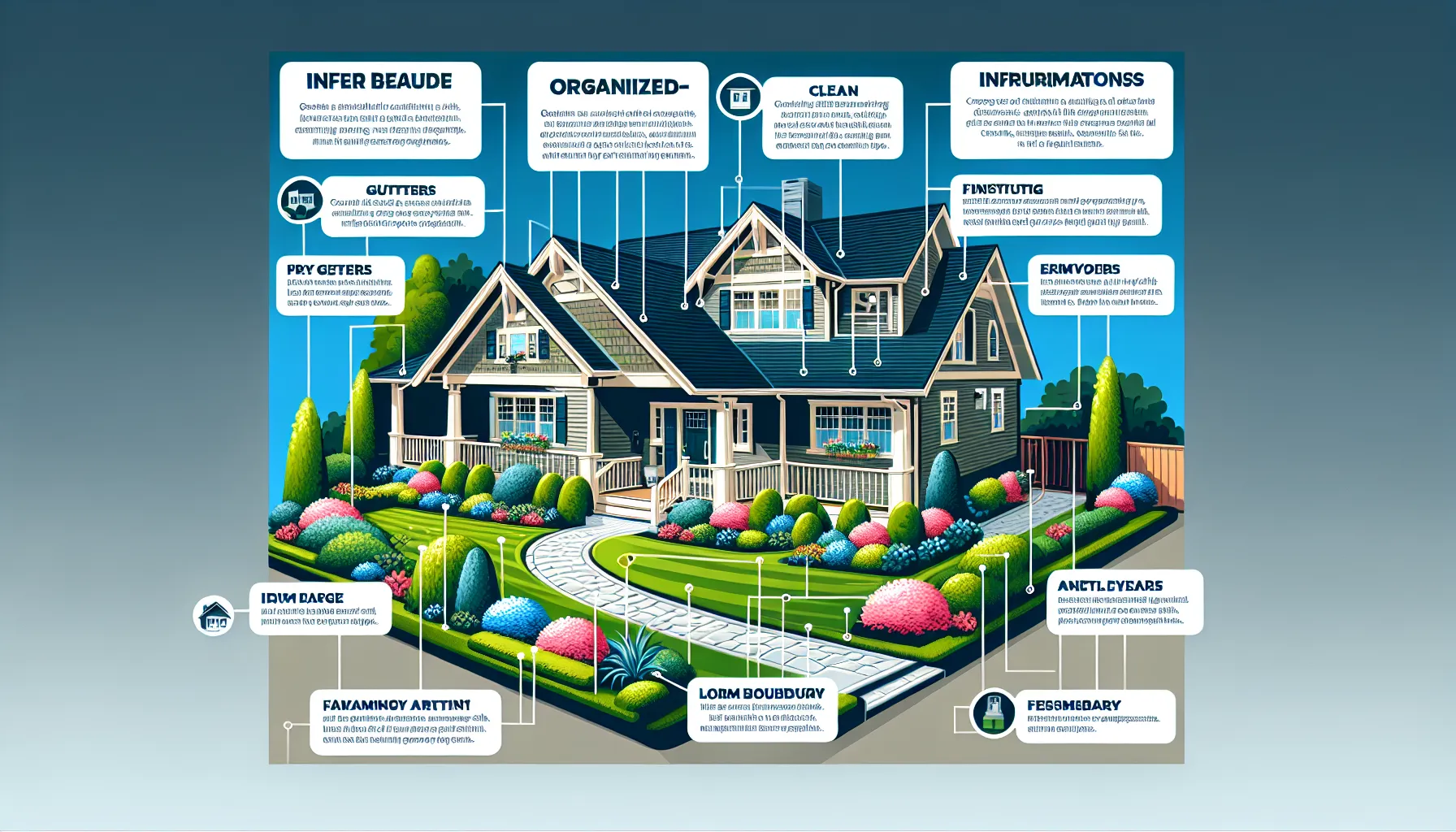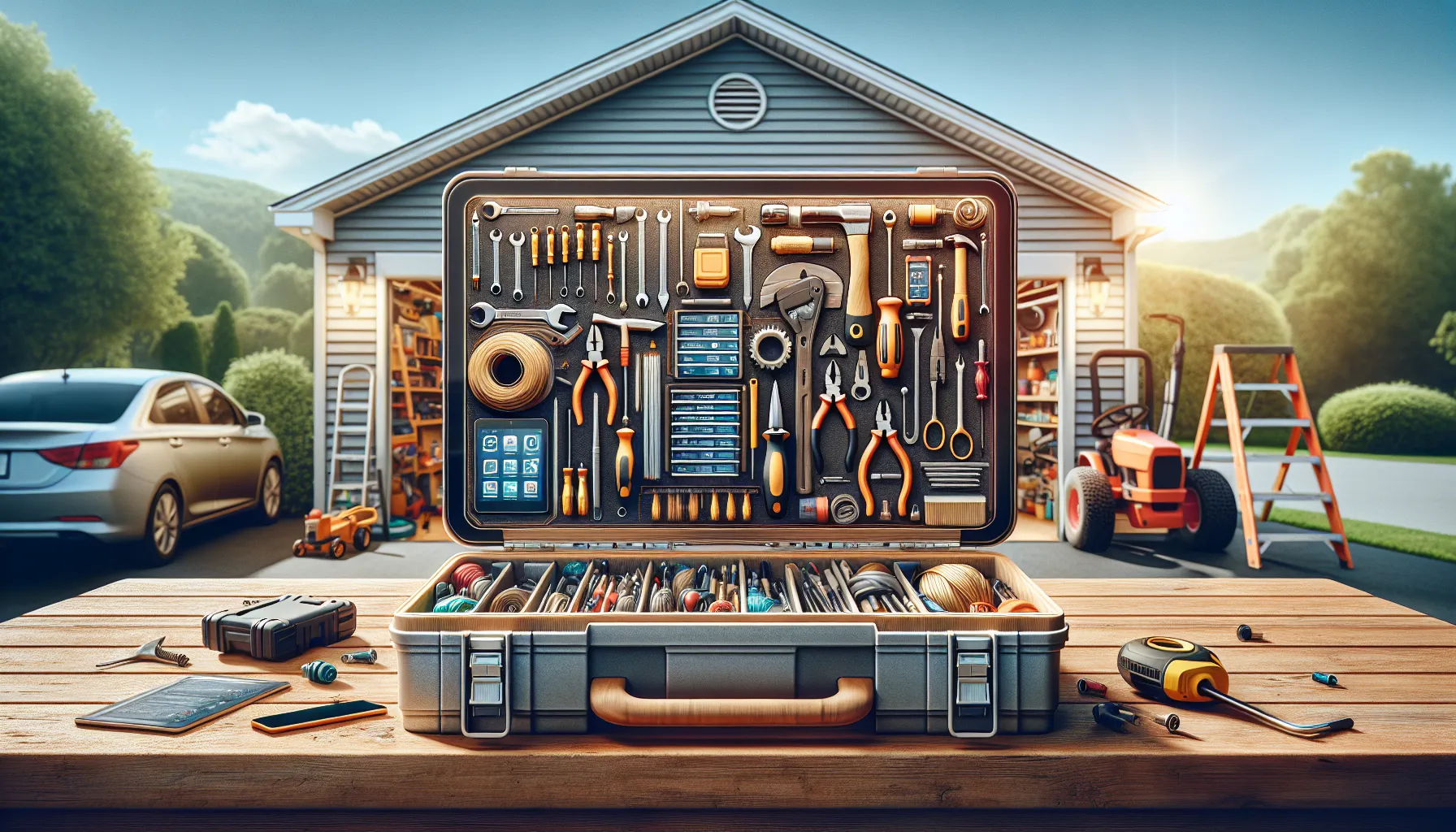Key Takeaways
- A property upkeep checklist helps Concord property owners stay organized, avoid costly repairs, and maintain property value.
- Key maintenance areas include regular exterior, interior, and seasonal tasks to prevent small issues from becoming major problems.
- Breaking down tasks by frequency and priority ensures critical health and safety items are never overlooked.
- Using digital tools and keeping detailed maintenance records streamline scheduling and communication with contractors and tenants.
- Regularly updating your checklist and engaging tenant feedback helps address emerging concerns and keeps your property in top condition.
- Having essential tools, professional contacts, and clear cost estimates on hand makes property upkeep more manageable and less stressful.
Keeping a property in Concord in top shape can feel overwhelming, especially with busy schedules and shifting responsibilities. I know how easy it is for small maintenance tasks to slip through the cracks, only to become bigger headaches down the line. Regular upkeep isn’t just about curb appeal—it protects your investment and keeps tenants happy.
Have you ever wondered if you’re missing important steps in your routine? A well-organized checklist can make the process simple and stress-free. Whether you own a single rental or manage several units, having a clear plan helps you stay on track and avoid costly surprises. What are the must-do tasks for Concord property owners, and how often should they be done? Let’s explore the essentials together so you can feel confident your property is always well cared for.
Importance of a Property Upkeep Checklist in Concord
A property upkeep checklist in Concord gives me a practical way to protect my investment. When I keep track of key maintenance tasks, sudden repair bills rarely catch me off guard. Have you ever discovered a problem in your property, only to wish you’d caught it earlier? A checklist keeps that from happening.
Organizing maintenance routines by season or month makes ongoing care less overwhelming. Instead of constantly wondering what needs my attention next, I can see it all at a glance. I know which systems like heating and air conditioning need service before peak seasons. This approach helps keep tenants happy and safe, reducing the chance of emergency calls.
Staying consistent with inspections helps me spot minor issues, such as small leaks or worn seals, before they become costly. Have you counted how quickly a small repair can escalate if missed? Scheduled checks provide peace of mind and show tenants that I care about their comfort.
Detailed records also simplify communication with contractors, appraisers, or insurance agents. I find that having a documented history of care supports property value and smooths out claims or sales. Do you track what you’ve fixed and when? If not, a checklist makes it easy to start.
By using a property upkeep checklist in Concord, I create a system that saves both time and money, while building trust with tenants and helping my property retain its value.
Key Areas to Include in Your Property Upkeep Checklist

I keep my property in Concord running smoothly by paying attention to every important area. Want to avoid surprises and protect your investment? A practical checklist makes property upkeep much easier. Which parts of your property do you usually check first?
Exterior Maintenance
I always include exterior maintenance as a priority. Roofs hold up well only when inspected for damaged shingles and leaks at least twice a year. Gutters and downspouts get cleaned in spring and fall to prevent water damage. Lawns need mowing and trimming during the growing season, while shrubs benefit from regular shaping. Paths and driveways stay safe when cleared of debris and checked for cracks. Lighting around entrances and walkways helps tenants feel safe and deters unwanted visitors. Do you regularly inspect the outside of your property or wait until you spot an issue?
Interior Upkeep
Interior upkeep protects both people and building value. Smoke and carbon monoxide detectors get tested and batteries replaced every six months. I inspect plumbing for leaks, stains, or slow drains during scheduled walkthroughs. Heating and cooling systems work best after filter replacements at least quarterly and annual professional servicing. Walls and ceilings should stay free of mold, peeling paint, or water stains, and I note any tenant-reported damage. How do you keep track of small repairs so they don’t turn into big problems?
Seasonal Tasks
Seasonal tasks help me prevent emergencies and extend the life of building systems. In spring, I check for winter weather damage and schedule air conditioning maintenance. Before winter, I service heating systems and protect exposed pipes from freezing. Weather stripping for windows and doors makes a clear difference in energy bills, so I update them every fall. Outdoor faucets get drained before cold snaps. Is your checklist ready for changing weather, or does it grow as each season arrives?
Tips for Creating an Effective Property Upkeep Checklist in Concord

Building an efficient property upkeep checklist in Concord starts with breaking down responsibilities into logical groups. I focus first on categories like exterior, interior, and seasonal tasks. Have you thought about how listing these areas separately helps you track progress and spot gaps?
Including a frequency column next to each task streamlines scheduling. I often use intervals such as monthly, quarterly, or annually to set reminders. For example, I schedule gutter inspections twice a year and HVAC servicing every six months. How often do you check your smoke detectors or plumbing for leaks?
Prioritizing health and safety tasks makes a real difference. I always put fire alarms, carbon monoxide detectors, and emergency lighting at the top of my list. Regular inspection catches issues early, reducing risk. Listing tasks by importance helps identify what can’t wait.
Using simple language for each checklist item keeps things clear. Short phrases like “test sump pump” or “trim hedges” limit confusion. Grouping tasks by room or system, such as ‘kitchen appliances’ or ‘electrical,’ further organizes the process.
Documenting completion dates next to each task highlights what’s been done and what’s pending. I find this record vital when sharing information or planning maintenance budgets. Have you considered tracking recurring issues to spot patterns or areas needing extra attention?
Adjusting the checklist as property needs change helps keep everything current. If I notice more wear in certain areas after a season, I add relevant items or shorten inspection intervals. Engaging tenants with a simple feedback method also uncovers new maintenance concerns. What feedback have your tenants provided that shaped your approach?
Finally, I revisit my checklist at least twice a year. Updating it to reflect repair trends, regulatory changes, or tenant input keeps the property in great shape. What steps do you take to keep your checklist fresh and actionable?
Recommended Tools and Resources for Property Maintenance

I find that the right tools and resources make routine property upkeep much easier in Concord. Even experienced property owners sometimes run into small issues that slow down inspections or repairs. Are there items you rely on most when tackling your own checklist throughout the year?
Essential maintenance tools:
Screwdrivers, adjustable wrenches, hammers, pliers and measuring tapes help me cover small fixes from door adjustments to leaky faucets. For outdoor care, I keep a leaf blower, sturdy ladder, lawn trimmer and hose ready. Fire extinguisher, flashlight and replacement batteries for detectors support my safety inspections.
Digital checklists and reminders:
Maintenance apps and property management software help me organize and track tasks. I use these platforms to set reminders for seasonal duties, record service dates and keep digital copies of inspection reports. Have you tried using digital tools or do you prefer a paper checklist?
Detailed property records:
I save maintenance logs, warranty paperwork and appliance manuals in one folder. This approach makes it quick to reference details if I need to coordinate with contractors or respond to tenant questions. Up-to-date records also support smooth claims and sales. How often do you add new information to your files?
Professional support contacts:
I keep a list of trusted local plumbers, electricians and landscapers. Having those phone numbers handy reduces stress during emergencies. Regularly scheduling semi-annual inspections with service providers helps spot issues early.
Maintenance cost planning:
Clear knowledge of typical local service fees helps me predict costs. Here’s an example of standard rates I track:
| Service | Average Local Cost (USD) |
|---|---|
| Seasonal Maintenance & Inspections | $75 per visit |
| Appraiser Access Assistance | $125 per access |
| Insurance Claim Oversight | $100 per claim |
| Home Improvement Coordination | 7.5% of project cost |
What tools, contacts or systems do you find most valuable when staying ahead of upkeep tasks? I’ve learned that keeping these essentials at hand supports a smoother, less stressful maintenance process in Concord.
Conclusion
Staying on top of property upkeep in Concord doesn’t have to feel overwhelming. With a clear checklist and the right tools in hand I can manage my property more efficiently and keep tenants happy.
By making maintenance a routine part of my schedule I protect my investment and avoid costly surprises. A well-organized checklist keeps me proactive and confident that my property is always in great shape.
Frequently Asked Questions
What is the main benefit of using a property upkeep checklist in Concord?
A property upkeep checklist helps property owners stay organized, ensures key maintenance tasks aren’t missed, and prevents costly repairs. By identifying issues early, it saves time and money while keeping tenants satisfied and protecting property value.
How often should maintenance tasks be performed?
Maintenance task frequency varies; some tasks are monthly (like checking smoke alarms), some are seasonal (like servicing heating systems), and others are annual (such as roof inspections). A checklist with recommended frequencies helps schedule tasks efficiently.
Why is regular property maintenance important for owners?
Regular maintenance preserves property value, reduces emergency repair costs, and ensures safety for tenants. Proactive upkeep also fosters good relationships with tenants by demonstrating care and maintaining comfort standards.
What are the most important areas to include on a maintenance checklist?
Essential areas include exterior elements (roof, gutters, lighting, landscaping), interior systems (smoke detectors, plumbing, HVAC), and seasonal tasks (winterizing pipes, AC servicing). Prioritize health and safety-related maintenance.
How can property owners improve their maintenance checklists?
Break down tasks into logical categories, include task frequency, use clear language, and document completion dates. Adjust the checklist as property needs change and solicit tenant feedback to keep it relevant.
What tools and resources make property maintenance easier?
Basic hand tools, yard care equipment, and digital checklists help with daily upkeep. Property management software can also track tasks, schedules, and expenses efficiently. Keeping detailed maintenance records streamlines communication with contractors.
Should tenants be involved in the maintenance process?
Yes, involving tenants by accepting their feedback helps identify emerging issues early and ensures the maintenance checklist addresses real concerns, leading to more effective property care.
How does regular maintenance affect property value and rental income?
Consistent upkeep preserves property value, attracts quality tenants, reduces vacancies, and minimizes large, unexpected expenses. Well-maintained properties are more attractive to buyers and command higher rental prices.
